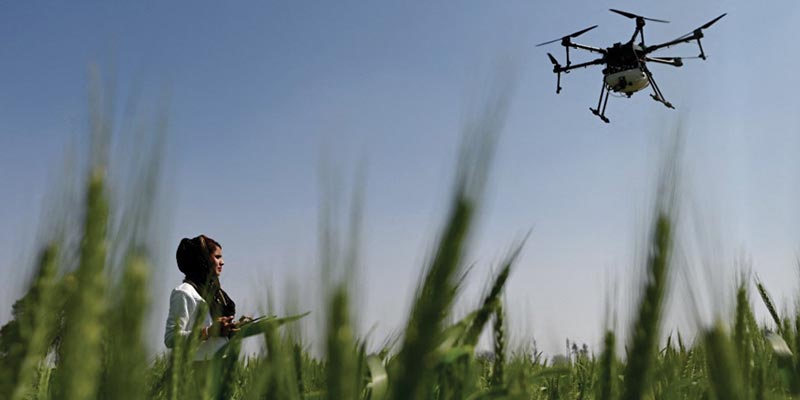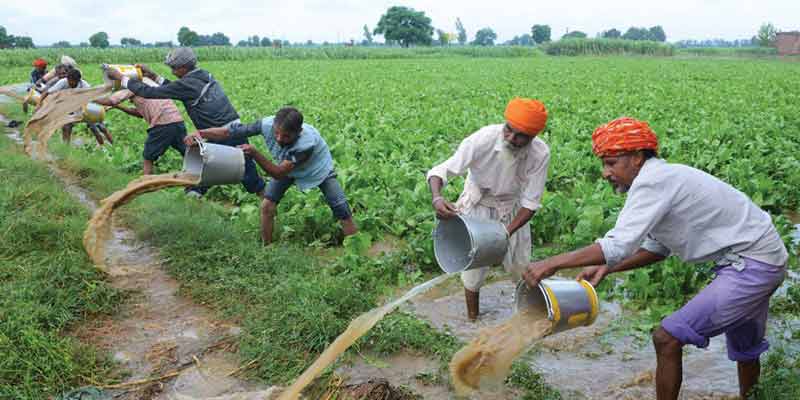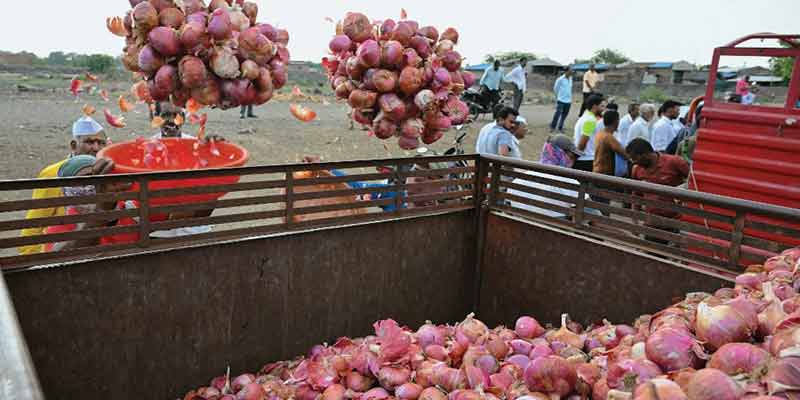- India
- Aug 01
India needs to re-imagine the contours of agri sector for next generation
• The Indian agriculture sector provides livelihood support to about 42.3 per cent of the population and has a share of 18.2 per cent in the country’s GDP at current prices. The sector has been buoyant, which is evident from the fact that it has registered an average annual growth rate of 4.18 per cent at constant prices over the last five years.
• Several initiatives and measures taken by the government in the form of assured remunerative prices through Minimum Support Price (MSP) improving access to institutional credit, enabling crop diversification, promoting digitisation, and mechanisation, encouraging adoption of sustainable practices through organic and natural farming, and focusing on productivity enhancement have had a positive impact on the sector.
• The Economic Survey 2023-24 highlights that the country has come a long way from being a food deficit and importing country in the 1960s to being a net exporter of agricultural products.
• At the same time, it is important to recognise that India has a good scope to enhance value addition in agriculture and make employment in agri-value chains both remunerative and attractive among Indian youth.
• While the country is a major agriculture producer, being the second largest producer in rice, wheat, cotton, among other crops, and the largest producer of milk, pulses and spices, the crop yields in the country are much lower than the other major producers.
• Agriculture has a much higher multiplier effect on overall GDP than indicated by its direct contribution.
Support for farmers
• India subsidises their water, electricity, and fertilisers. The former two are provided virtually free. Their incomes are not taxed. The government offers them a Minimum Support Price (MSP) for selected commodities. Monthly cash support is offered to farmers through the PM-KISAN scheme.
• In the past and in some cases, even now, Indian governments — national and sub-national — have waived their loans. So, governments in India spend enough resources to look after the farmers well. Yet, a case can be made that they can be served better with some re-orientation of existing and new policies.
• Farm products are doubtless subject to the interplay of market forces. If anything, the relative inelasticity of food consumption works in their favour. This creates a conundrum. Prices rise when weather or other factors adversely impact the harvest.
• Farmers respond by increasing the area under cultivation for the next year, leading to a glut in supply, which drags down prices. On both occasions, farmers fail to reap any rewards – because of inadequate produce in the first instance and lower prices in the second.
• Another risk for farmers is when output drops due to drought or drenching at harvest time. Prices rise, but the farmer is unable to benefit from the produce because it is inadequate. So, farming needs insurance.
• In theory, this insurance can come in the form of price support or income support. Price support interventions include direct price floors like the Minimum Support Price (MSP).
• Income support in the form of direct benefit transfers (DBT) like the PM KISAN is the preferred form of agriculture subsidy in many developed countries. Crop insurance, like the Prime Minister’s Fasal Bima Yojana (PMFBY), is another form of income support.
• Given the vagaries of weather and the inherent difficulties of responding to prices promptly, there is an economic and moral case for farmers to be supported when market prices fail them. At the same time, farmers must have the freedom to benefit from market prices when market prices operate in their favour.
What can govt do to let markets function in the interests of farmers?
1) By not banning futures or options markets at the first sign of price spikes. These markets do not hurt consumers or farmers at all times. The bar for such bans must be set so high that their recourse must be almost non-existent. The intelligent regulatory design of such markets can obviate the need for bureaucratic interference in the futures market for agricultural commodities.
2) By invoking export bans only under exceptional circumstances and allowing domestic consumers to substitute, especially if the agricultural commodities in question are not essential consumption items such as foodgrains. Even in those cases, the government can allow substitution effects to play out before responding to domestic supply concerns.
For example, if sugar prices rise, consumers can consume less of it or switch to jaggery. It may even be a good thing for their health. In general, it is far easier for consumers to substitute or pare back consumption than for farmers to endure big losses because of ad hoc export bans or huge imports. Farmers should be allowed to benefit from higher international prices. Bans on food exports also need to be telegraphed in advance lest hunger and famine elsewhere in the world worsen.
3) By re-examining the inflation-targeting framework. Food constitutes a very high portion of the consumer price index in developing countries. That is par for the course. Hence, when central banks in developing countries target headline inflation, they effectively target food prices. So, when food prices rise, inflation targets come under threat. Therefore, the central bank appeals to the government to bring down the increase in the prices of food products. That prevents farmers from benefiting from the rise in terms of trade in their favour.
India’s inflation targeting framework should consider targeting inflation, excluding food. Higher food prices are, more often, not demand-induced but supply-induced. Short-run monetary policy tools are meant to counteract price pressures arising out of excess aggregate demand growth. Deploying them to deal with inflation caused by supply constraints may be counterproductive.
Therefore, it is worth exploring whether India’s inflation targeting framework should target the inflation rate excluding food. Hardships caused by higher food prices for poor and low-income consumers can be handled through direct benefit transfers or coupons for specified purchases valid for appropriate durations.
4) Specifically, with reference to India, by increasing the total net irrigated area. Several states are well below the national average. Investment in irrigation may make monsoon-watching a non-event, but it would enhance farmers’ income security. Not only that, as in the case of power generation plants where the plant load factor has scope for improvement, India’s irrigation efficiency can also improve. It is only 30-40 per cent for surface water and 50-60 per cent for groundwater. This calls for better water utilisation farming practices and technologies like drip and fertigation. It will help raise productivity and cut down water and fertiliser use by almost 50 per cent.
5) Besides these, by making farming consistent with climate considerations. India produces too much foodgrains and sugar, too few pulses, oil seeds, and other cash crops. Grains such as rice and sugarcane are water-guzzling crops. Water criticality is escalating in India.
Further, among foodgrains, the cultivation of paddy gives rise to methane emissions. Its methane emission potential is considerable. Sometimes, and under some conditions, Direct Seeded Rice (DSR) or even organic farming for some crops could help save water and chemical fertilisers.
It is also important to recognise that India has achieved relative self-sufficiency in basic staples and has emerged as the largest exporter of rice in the world (almost 40 per cent of world exports in 2022-23). Exporting 20 MT of rice means at least exporting 40 billion cubic meters of water.
The Food Corporation of India currently has rice stocks that are more than three times the buffer stock norm. Excessive production of rice results from large subsidies for power for irrigation, water, and fertilisers. The time has come to promote ‘crop-neutral incentive structures’. That would imply that pulses, oilseeds, and millets that save on power, water, and fertilisers need to be rewarded with equivalent subsidies embedded in rice production.
The way forward
• The need of the hour is to move from basic food security to nutritional security. We need more pulses, millets, fruits and vegetables, milk and meat for that. Importantly, their demand is growing much faster than that of basic staples. So, farm sector policies should align more with a ‘demand-driven food system’ that is more nutritious and aligned with nature’s resource endowments.
• Policies that enhance the economic viability of farming, ensure food and nutritional security, and place it on an economically, climatically, and environmentally sustainable footing will attract private sector investment and pave the way for higher value addition by the sector while allowing public resources to be deployed in health, education, and skilling.
Agriculture is at the nexus of three of the greatest challenges of the 21st century:
i) Sustaining food and nutrition security.
ii) Adaptation and mitigation of climate change.
iii) Sustainable use of critical resources such as water, energy, and land.
• A growing challenge in agriculture pertains to sustainability issues like overexploitation, degradation of natural resources, and addressing the impact of climate change. The agricultural methods and inputs used have also had significant implications for sustainable agriculture.
• For example, increased use of fertiliser and chemicals, overexploitation, and unsustainable use of water resources have affected soil health and fertility. Variability in weather conditions and the relative predominance of rainfed agriculture also impact production and productivity.
• The climate change impact assessment carried out by the government underscores the need for adaptation in the sector. In the absence of the adoption of adaptation measures, rainfed rice yields in India are projected to drop by 20 per cent in 2050 and 47 per cent in 2080 scenarios, while irrigated rice yields are projected to reduce by 3.5 per cent in 2050 and 5 per cent in 2080 scenarios. Climate change is projected to reduce wheat yield by 19.3 per cent in 2050 and 40 per cent in 2080 scenarios
• Investment in agriculture research and support of enabling policies have contributed substantially to food security. It is estimated that for every rupee invested in agricultural research (including education), there is a payoff of Rs 13.85. There is a need to further strengthen research given the number of abiotic and biotic pressures the agriculture sector faces.
• Agriculture and allied sectors such as horticulture, livestock, fisheries, and dairy and activities such as food processing hold significant potential for gainful employment. Given the geopolitical and technological threats that both manufacturing and service sectors face, it makes immense sense to do whatever it takes to realise the latent employment potential in agriculture.
• Smallholder farmers’ incomes cannot be increased by producing rice, wheat, or even millets, pulses and oilseeds. They need to move to high-value agriculture — fruits and vegetables, fisheries, poultry, dairy and buffalo meat. Once the incomes of smallholders increase, they will demand manufactured goods, spurring a manufacturing revolution. That is what happened in China between 1978 and 1984 when the real incomes of farmers doubled in just six years.
• A greater focus on post-harvest infrastructure and the development of the food processing sector can reduce wastage/loss and increase the length of storage, ensuring better prices for the farmers. Productivity of the crop sector can also be enhanced through greater investment, including from the private sector.
• It is both urgent and important for India to re-imagine the contours of its primary sector for the next generation. India may have to abandon the old development playbook of moving on from agriculture to industry and services as economic development matures.
Manorama Yearbook app is now available on Google Play Store and iOS App Store





